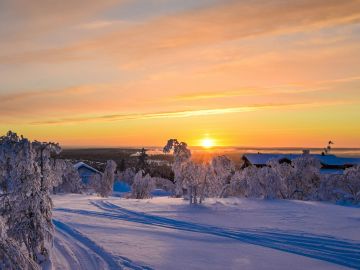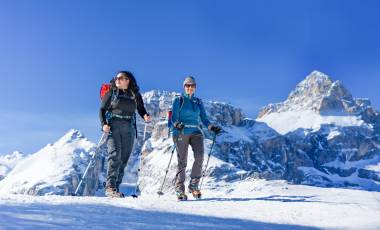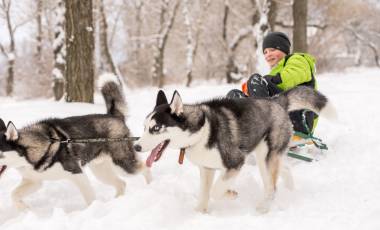When the weather turns colder, thoughts turn to wintertime trips and all the adventurous possibilities that snow and ice present. Whether you love to ski or simply love the sight of snowy mountaintops when you’re wrapped up warmly, a winter adventure holiday can mean different things to different people.
There’s a world of activities to try amid icy landscapes – some you know, others you may not. We’ve picked our favourite winter adventures to try in the winter season ahead, venturing northeast to Finland and Norway, northwest to Iceland, and southeast to Italy. Read on to find out 5 things you might not know about our winter adventures.
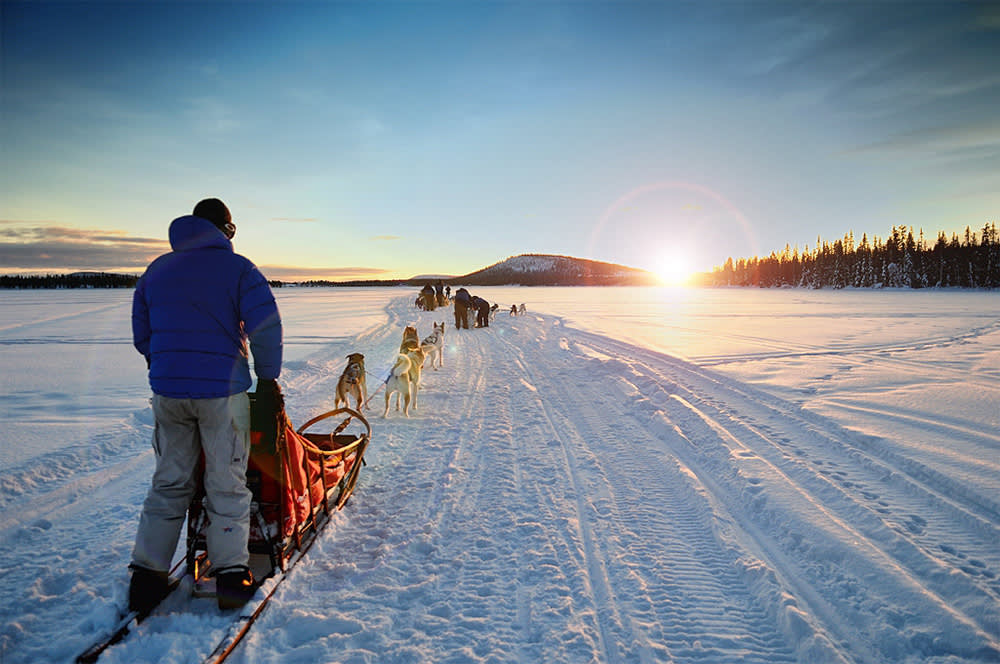
1. Dogsledding is a 4,000-year-old pursuit
Finnish sled dogs are fast and strong, pulling sleds across vast frozen and seemingly endless wonderlands in packs of eight. They’re impressively energetic animals with short fur and padded paws that protect them against harsh winter conditions. Research shows that dog sledding started over 4,000 years ago and was once relied on by the Finns – and other countries with similar climates – to transport goods and people, today, it’s an incredible experience for visitors to watch them work and experience the thrill of the ride. Ask winter adventurers about some of their favourite activities and dog sledding usually features – not only for the rush of gliding across the snow but to witness the ability and strength of the sled dogs.
Our guided group tour to Finland this winter blends multiple winter activities with the chance to try dog sledding. You’ll stay in traditional and cosy accommodations at Basecamp Oulanka alongside your fellow adventurers. So why not check out our departures between December 2022 and April 2023?
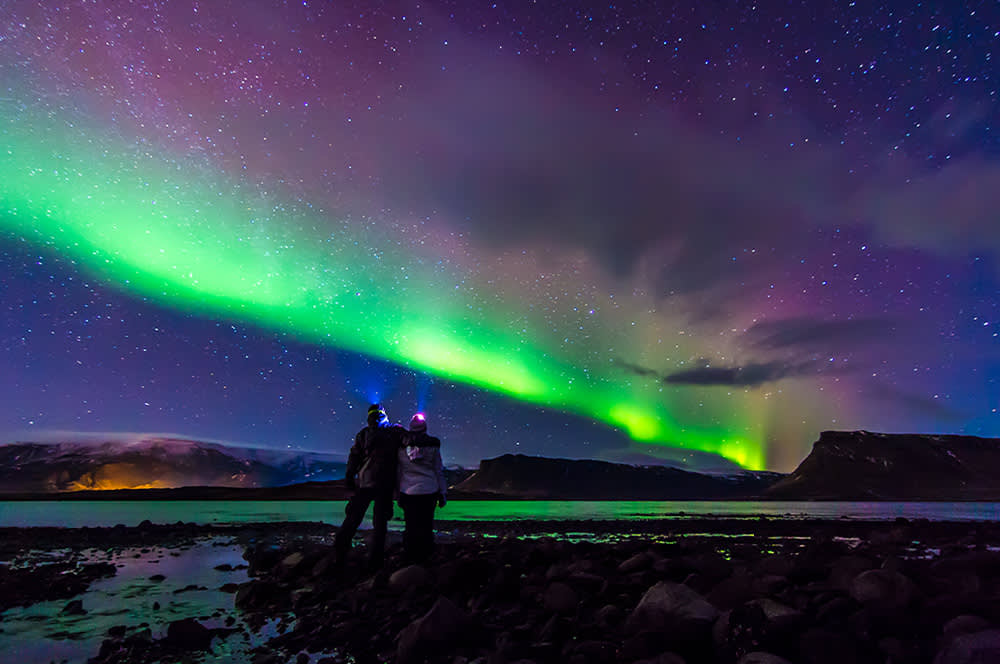
2. Northern Lights look green on camera, but to the naked eye they may appear grey
Rightly featuring on the bucket list of many, watching the Northern Lights perform a spectacular night-time display is an experience that stays etched in your memory. This otherworldly and ethereal display of lights that emerges on clear nights is utterly captivating.
The colours may even appear to be different whether you’re looking through a camera or the naked eye. This is because human eyes can’t see the relatively “faint” green colours of the aurora at night. Rod cells, concentrated in the periphery around the outside of our foveae, can detect fainter lights at night, but only in black, white and shades of grey.
While there’s a scientific explanation for the Northern Lights (involving electrically charged particles colliding with elements in Earth’s upper atmosphere and releasing light energy), it’s such an awesome sight that it has attracted myths and legends over millennia. Scandinavian fishing communities believed them to be a sign of good luck, and Finnish folklore spoke of a fox swishing its tailing shooting the lights into the sky. You have to see the aurora for yourself to make up your own mind – or come up with an imaginative theory of your own.
Remember – as with anything that depends on nature to play ball, sightings cannot be guaranteed, which is why it also makes sense to ensure there are plenty of other activities on your trip. Our Iceland Northern Lights trip has aurora-spotting firmly in mind, but during the day, you’ll visit thundering waterfalls and see icebergs on black volcanic sand with a backdrop of volcanoes.
Our guided group trip to Iceland has regular departures between November 2022 and March 2023 for a five-day trip. You’ll start in Reykjavik before completing the Golden Triangle of Gullfoss Waterfall, Geysir, and Thingvellir National Park with the chance to spot the Northern Lights over your four-night Icelandic adventure.
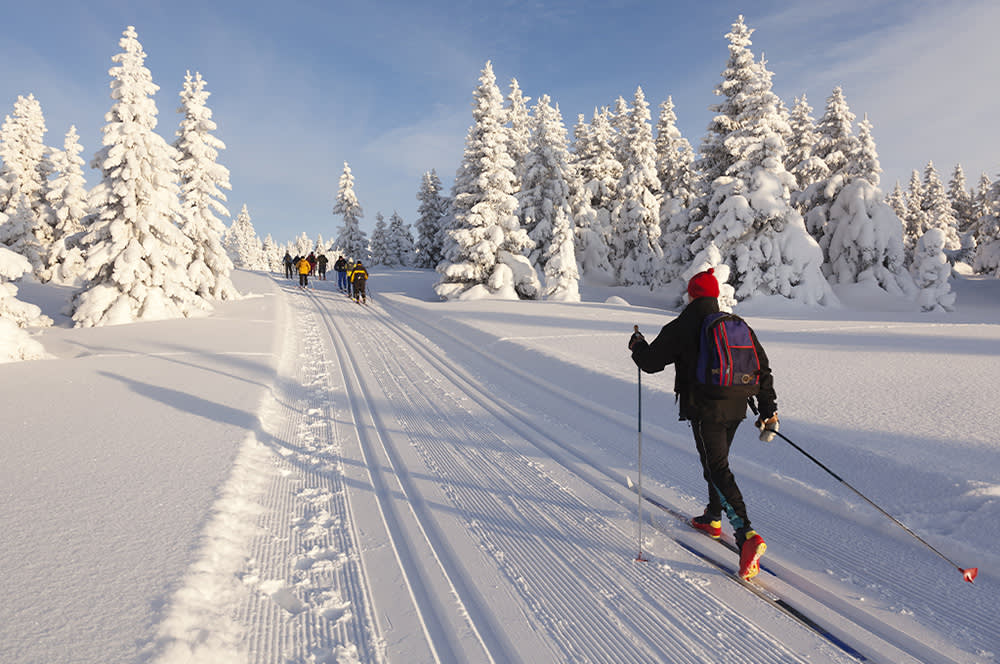
3. Norway has won more medals for cross-country skiing than any other nation in Winter Olympic history
Downhill skiing can be an incredible challenge. But a new type of adventure opens up when you ski cross-country. No country executes this sport quite like Norway, the winner of an impressive 405 total medals including 148 gold medals in cross-country skiing. It’s their official national sport – perhaps unsurprising given that people in Nordic countries have used skis to get around for over 5,000 years. It also means the terrain is well-prepared for cross-country skiers, with a network of groomed trails.
Follow in Norway’s Olympians’ footsteps (or tracks) and join a guided Cross-country Skiing: Kvitavatn tour suitable for all abilities. There are several departures between December 2022 and March 2023 for a seven-night trip with five days of guided cross-country skiing, excluding flights but including meals.
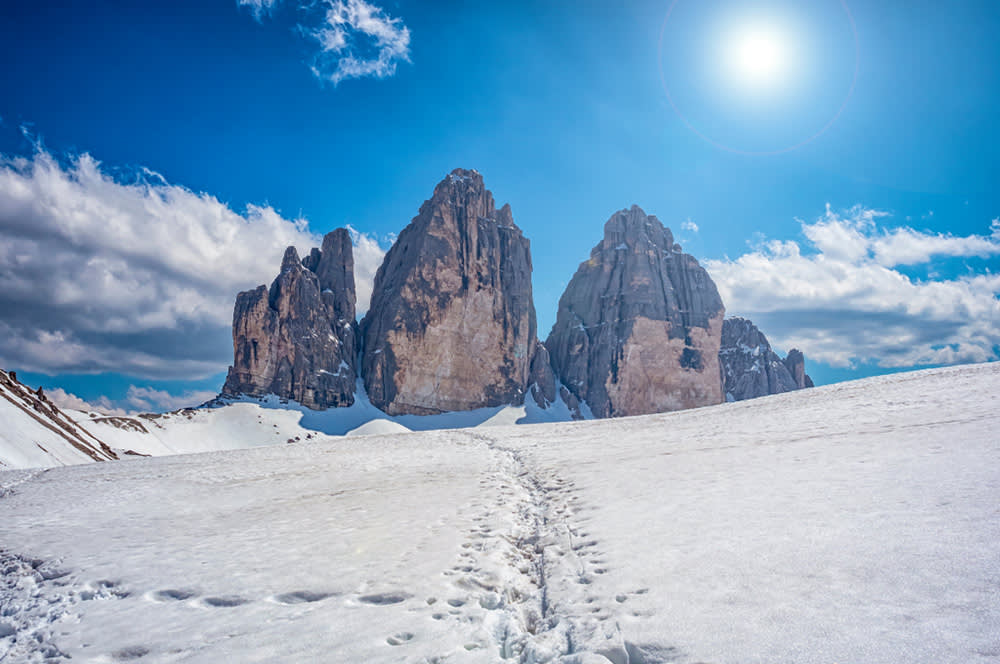
4. You may find WW1 bunkers snowshoeing in the Dolomites
Snowshoeing is winter hiking, where you wear special footwear that gives you a larger footprint to spread your weight across the surface to limit how much you sink into the snow. For keen hikers, it’s a great extension of a favourite pastime, opening a world of wintery wonderlands with the help of snowshoes and ski poles. It’s also a great sport for beginners, allowing you to venture deeper into snow-covered landscapes further than you otherwise could.
You can snowshoe in winter destinations worldwide, but one of our favourite spots is the Dolomites in Italy. Here, you can follow scenic routes through the Fanes-Sennes Natural Park, following shorelines of lakes and standing in the shadows of massive, jagged peaks. Along with dramatic scenery, there’s also a lot of fascinating history to discover in the area. The Dolomites border Austria and Italy, which was once central to some of the most ferocious battles in World War I. Today you might see tunnels and bunkers as you snowshoe along the trails.
Join our guided Snowshoeing in the Dolomites trip on one of several departures between December 2022 and March 2023, and see the Dolomites’ battle scars yourself. The equipment you need is provided, and you’ll return to a comfortable four-star hotel with a cosy restaurant, bar, and spa area every evening.

5. Igloos and quinzhees aren’t one and the same
You’ve probably heard of an igloo, but what about a quinhzee? Quinzhees, or quinzees, are a type of snow shelter made from a pile of loose snow, in contrast to an igloo built from blocks of hard snow. It’s an essential snow survival skill and one you can learn on our Finnish Wilderness Week, where you’re based in a remote part of Finland. You’ll build a quinzhee in a group of four, building a fire to keep you warm as you work, and then have the option of sleeping in your self-made dwelling.
Finnish Wilderness Week allows you to try other snow-based adventures, too. From snowshoeing to Northern Lights spotting and dog sledding – it’s the ultimate winter trip for adventurers. Departures run from December 2022 to April 2023.
Join Exodus in the 2022/2023 season and challenge yourself to something new in the snowy landscapes. Check out our Guide to Winter Adventures to help you decide which adventure best satisfies your winter wanderlust.
